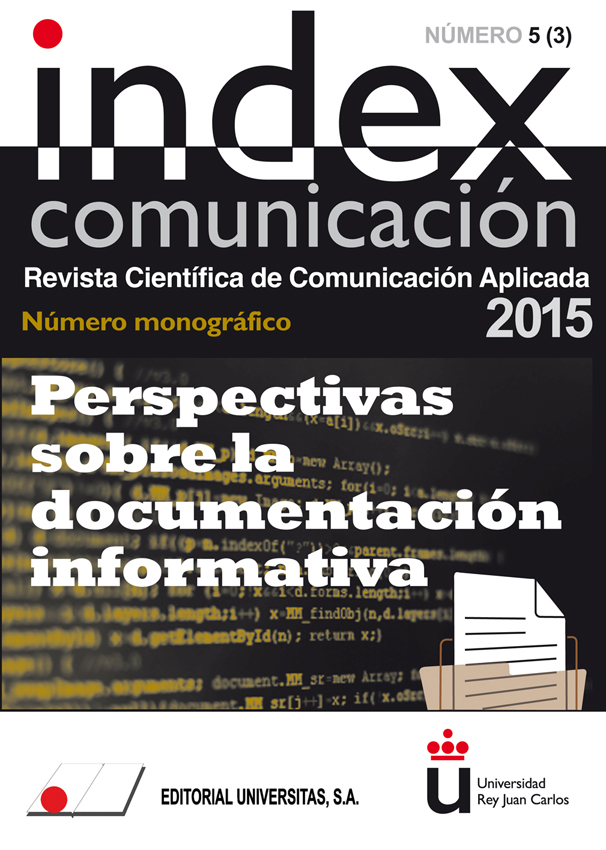The Blog is Dead, Long Live the Blog! Analysis of Blogs on Spanish Radio Stations
Keywords:
radio, blogs de radio, Onda Cero, Radio Nacional de España, Cadena Ser, CopeAbstract
Blogs linked to the various media channels have changed considerably over the last five years as a direct result of the growth of the social networks, and they now occupy a secondary position, at least in terms of visibility. In theory one of the media where you would expect them to be least used is the radio, even if there are no specific studies to the effect. Beginning from this hypothesis, the aim of this work is to analyze the blogs on the major Spanish radio stations with a nationwide audience, both public and private, to quantify and categorize the content, check links to specific programs and gain an understanding of their current activity. With the results obtained it was concluded that the creation of blogs has been maintained in the last three on this list since 2010, with a considerable increase on La COPE; that subject matter is varied, with particular focus on Cultural topics and Sport and that the longest running active blog is ‘El Larguero’ (the crossbar) on Cadena SER.
Metrics
References
Blanco, A. (2007): ‘El quinto poder se teje en la blogosfera’, en Expansión, Consultado el 11 de octubre de 2007 desde:
http://www.expansion.com/edicion/exp/economia_y_politica/entorno/es/desarrollo/1044928.html
Contreras Contreras, F. (2004): ‘Weblogs en Educación’, en Revista Digital Universitaria, nº 10, vol. 5, en línea desde: http://www.revista.unam.mx/vol.5/num10/art65/nov_art65.pdf
Díaz Campos, J. (2014): ‘La adaptación de las cadenas de radio españolas a la web 2.0’, en Tercer Mileno, xix, nº 27, pp. 33-42.
Gómez, R. G. (2010): ‘El (incierto) papel de la prensa’, en El País, consultado el 31 de mayo de 2010 desde: http://www.elpais.com/articulo/sociedad/incierto/papel/prensa/elpepisoc/20100531elpepisoc_1/Tes
Kottke, J. (2013): ‘El blog está muerto, larga vida al blog’, en Niemanlab, consultado el 2 de febrero de 2015 desde: www.niemanlab.org/2013/12/the-blog-is-dead
Marcos Recio, J.C.; Sánchez Vigil, J.M. y Olivera Zaldua, M. (2011): ‘Presencia y contenidos de los blogs en los principales diarios españoles’, en El Profesional de la Información, nº 6, vol. 19, pp. 602-609.
Marcos Recio, J. C.; Sánchez Vigil, J. M. y Villegas Tovar, R. (2008): ‘Los blogs como soporte de información en bibliotecas y centros de documentación: ¿Qué esperan los usuarios?’, en Boletín ANABAD, t. 58, pp. 501-516.
Martínez-Costa, P.; Moreno, E.; Amoedo, A. (2012): ‘La radio generalista en la red: un nuevo modelo para la radio tradicional’, en Anagrama, x, nº 20, pp. 165-180.
Ortiz Sobrino, M. Á. (2012): ‘Radio y postradio en España: una cohabitación necesaria y posible’, en Área Abierta, xii, nº 2, en línea desde: http://revistas.ucm.es/index.php/ARAB/article/view/39637/38138
Padilla García-Argudo, M. (2014): ‘Estudio de los blogs en las televisiones públicas’. Trabajo de Fin de Master. Madrid: UCM. Master en Gestión de la Documentación, Bibliotecas y Archivos.
Peña Jiménez, P. (2013): ‘Nuevas formas de participación. Interactividad y redes sociales en la radio española’, en Telos, nº 92, julio-septiembre, en línea desde: http://telos.fundaciontelefonica.com/DYC/TELOS/NMEROSANTERIORES/Nmeros8099/DetalleAnteriores_92TELOS_ANALISIS1/seccion=1268&idioma=es_ES&id=2012071611560001&activo=6.do.
Prieto, L. (2007): ‘Información y documentación radiofónica. La experiencia de Radio Nacional de España’, en El Profesional de la Información, nº 5, vol. 16, pp. 443-450.
Prieto, L.; Montero, P. (2003): ‘El documentalista ante la sociedad de la información: experiencia en aplicaciones multimedia en Radio Nacional de España como respuesta a la demanda estructurada de documentación’, en III Jornadas Andaluzas de Documentación. Sevilla: Asociación Andaluza de Documentación, pp. 147-156.
Sánchez Vigil, J.M.; Padilla García, M.; Herrero García, D. (2012): ‘Uso de las redes sociales en los medios de comunicación: las emisoras de radio y televisión en España’, en Seminario Hispano Mexicano. México: UNAM.
Downloads
Published
How to Cite
Issue
Section
License
Authors who submit to this journal agree to the following terms:
Authors retain copyright and ensure the magazine's right to be the first publication of the work as licensed under a Creative Commons Attribution-NoComercial 4.0 International License that allows others to share the work with an acknowledgment of authorship of the work and the initial publication in this magazine, with no commercial purpose.
Authors can establish separate additional agreements for non-exclusive distribution of the version of the work published in the magazine (for example, to an institutional repository or publish it in a book), with an acknowledgment of its initial publication in this journal.
It allows and authors are encouraged to disseminate their work electronically (eg, in institutional repositories or on their own website) prior to and during the submission process, as it can lead to productive exchanges, as well as a citation more early and most of the published work (See The Effect of Open Access).















